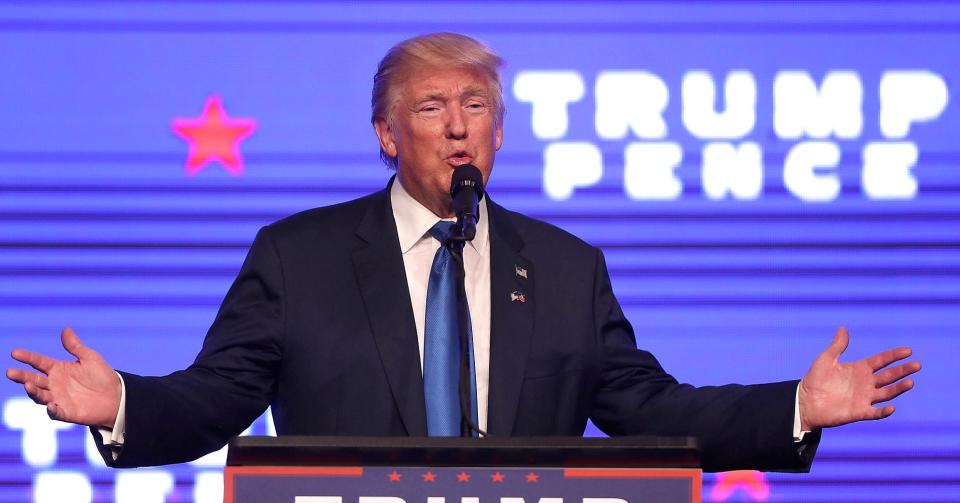Donald Trump's tax plan would help the 1% most

Donald Trump's new tax plan gives the top 1 percent an average cut of at least $122,400, while the middle class could get a break of less than $500, according to a new analysis.
The independent Tax Foundation said Monday that the Republican presidential candidate's plan, announced last week, would cut taxes for every income group. Yet the biggest reductions would go to the biggest earners.
According to the plan, the top 1 percent of taxpayers would see a 10.2 percent to 16 percent boost in their after-tax incomes from the plan, assuming a steady economy. The middle class, or those in the 40 percent to 60 percent quintile, would only see a 1.3 percent increase.
Using $1.2 million as the average income for the top 1 percent, members of this group would get an average tax cut between $122,400 and $192,000, according to the Tax Foundation. The middle-quintile taxpayers, who earn an average $38,000, would get a $494 break.
The tax cut for the 1 percent would be even larger using the Trump campaign's assumptions about economic growth under the plan. Using so-called dynamic scoring, which assumes a larger economy and broader tax base, the top 1 percent would get a tax cut between 12.2 percent and 19.9 percent. That works out to savings between $146,400 and $238,800.
Using the Trump campaign's economic forecast, which calls for 3.5 percent annual GDP growth, the middle quintile would get a tax cut between 7.7 percent and 9 percent, or $2,926 to $3,420. Last year, U.S. GDP increased roughly 2 percent.
The Tax Foundation says the plan would reduce federal revenue by between $4.4 trillion and $5.9 trillion, assuming current economic conditions. But the foundation said the plan would lead to "higher long-run levels of GDP, wages and full-time equivalent jobs." Under faster growth, the plan would cut revenue by $2.6 trillion to $3.9 trillion.
Yet Trump's tax plan contains several benefits to the wealthy. The top individual income tax rate would fall from the current 39.6 percent to 33 percent, and the corporate tax rate would drop from 35 percent to 15 percent. He would also eliminate the federal estate tax and gift taxes.
The Tax Foundation left open the question of how Trump's plan would treat so-called pass-through income — one of the most controversial parts of his original proposal. Pass-through income is income that "passes through" a business to the individual returns of the business' owners. It includes owners of sole proprietorships, S corporations, LLCs and other business structures.
Trump's original plan called for applying the 15 percent rate to income that passes through a business to the individual returns of a business owner, down from 39.6 percent. That would amount to a $1.5 trillion tax cut mainly benefiting the wealthy, since more than two-thirds of pass-through income goes to the top 1 percent of taxpayers, according to the Tax Foundation. Those uncertainties account for the range in the foundation's analysis.
More From CNBC
Top News and Analysis
Latest News Video
Personal Finance
